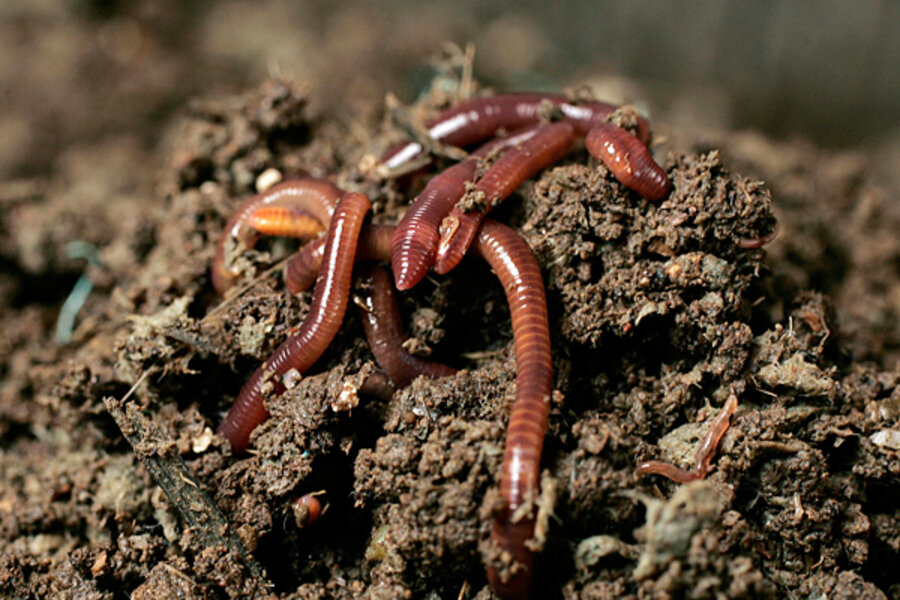Worms in space: how one experiment could send them to Mars
Loading...
Forget people. The first travelers that humans intentionally rocket to Mars could well be tiny worms.
A team of scientists from Britain and the United States have found that the humble worm Caenorhabditis elegans – which usually calls a compost pile home and finds rotting fruit a delicacy – can be a big help to researchers trying to figure out how alien environments could affect space-suited explorers.
No, worms don't have Mars on their itinerary anytime soon. But five years ago, they did spend six months on the International Space Station. Researchers sent a colony of 4,000 worms to the station to see how extended exposure to microgravity affects their behavior and flaccid physique.
On Wednesday, research from that experiment was published online in the Royal Society's journal Interface. Already, it's shedding some light on interplanetary questions universal and intimate.
For instance, one enduring issue that until recently space agencies have been somewhat squeamish about discussing publicly is the effect of microgravity on human reproduction in space. Some organisms that researchers have sent up have been unable to reproduce.
But if results involving C. elegans provide any hint for humans, no worries. C. elegans eggs developed to adulthood in ways comparable to control specimens on Earth. The adults in turn had offspring. In all, the researchers tracked the on-orbit mini-colony through 12 generations of wriggling nematodes.
More broadly, declines in muscle mass that the worms experienced in space, as do humans, seemed to plateau after a period. The team says the results suggest that the loss – whether of muscle or, in the case of humans, of bone as well – may represent an adaptation to a new environment, not a relentless degradation, as some had feared.
Such a change may play itself out within the first two or three generations, says Nathaniel Szewczyk, with the University of Nottingham's School of Graduate Entry Medicine in Britain, who led the team.
In the Interface paper describing the research results, the team readily acknowledges that "a worm is not a man."
However, humans and C. elegans have comparably sized genomes. Some 50 to 60 percent of the worm's 20,000 protein-encoding genes have clear human counterparts.
C. elegans has well-evolved nerve and muscle systems, moves equally well in soil or liquid, and responds to changes in its environment – sensing changes in chemicals, heat, oxygen, and ultraviolet light, for instance. The organism already is used to study the effects of environmental contaminants. Worms in space, the team posits, could provide the same service in designing radiation shielding and other elements of an interplanetary life-support system.
The worms' home away from home on the station consisted of layered trays, or cells, containing a liquid that carried the worms' food. It was also the medium in which they lived. Tiny video cameras, with small LEDs for klieg lights, allowed researchers to keep tabs on the worms. Nearly everything came together in a box about half the size of a large shoe box, and the experiment used off-the-shelf, 1980s technology, says Dr. Szewczyk.
During the course of the worms' mission, the researchers varied the amount of food available to see how the worms would react compared with similarly treated counterparts on Earth. The orbiting worms' level of activity was similar when well fed, and their behavioral reactions to starvation and restoration were similar.
"We have been able to show that worms can grow and reproduce in space for long enough to reach another planet and that we can monitor their health" remotely, Szewczyk says.
The tiny worms represent "a cost-effective option for discovering and studying the biological effects of deep-space missions," he says.
To boldly go where no worm has gone before?





